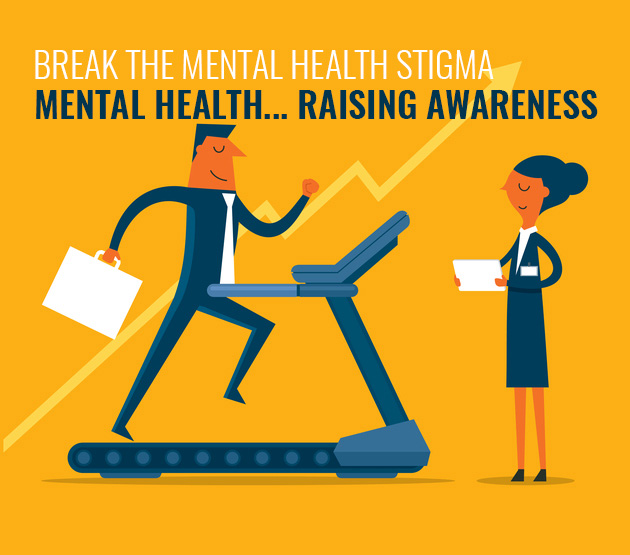Investing In Childhood Mental Health: A Societal Imperative

Table of Contents
The Economic Burden of Untreated Childhood Mental Illness
The financial ramifications of neglecting childhood mental health are substantial and far-reaching. Untreated conditions lead to significant long-term economic losses, impacting individuals, families, and the nation as a whole.
Lost Productivity
Untreated mental health issues in children often translate into reduced productivity and economic hardship in adulthood. The impact is multifaceted:
- Lower Educational Attainment: Children struggling with anxiety, depression, or other mental health challenges may experience difficulties concentrating, attending school regularly, and achieving their academic potential. This can lead to lower educational attainment, limiting future employment opportunities and earning potential.
- Unemployment and Underemployment: Adults with untreated mental health problems stemming from childhood often face challenges in securing and maintaining employment. This results in lost income, reduced tax revenue, and increased reliance on social welfare programs.
- Reduced Workplace Productivity: Even when employed, individuals with untreated mental health conditions may experience reduced productivity due to absenteeism, presenteeism (being present but not fully engaged), and difficulty performing job tasks effectively.
Studies have shown a strong correlation between untreated childhood mental health issues and decreased lifetime earnings, contributing significantly to the overall economic burden. For instance, a study by the Centers for Disease Control and Prevention (CDC) found that untreated mental health problems in children resulted in a significant reduction in adult employment rates.
Healthcare Costs
The long-term healthcare costs associated with untreated childhood mental illness are also substantial. Neglecting early intervention often leads to the development of more severe mental health conditions in adulthood, necessitating more extensive and costly treatment.
- Increased Hospitalizations: Severe mental health crises often require hospitalization, incurring significant costs for inpatient care, medication, and therapy.
- Higher Medication Costs: Managing chronic mental health conditions frequently involves long-term medication, adding to the overall healthcare burden.
- Extensive Therapy and Counseling: Addressing complex mental health issues requires ongoing therapy and counseling, further increasing healthcare expenses.
Early intervention programs have demonstrably reduced long-term healthcare costs by preventing the escalation of milder issues into more severe and costly conditions later in life. Investing in early intervention is therefore a fiscally responsible strategy.
The Societal Impact of Childhood Mental Health Issues
Beyond the economic consequences, untreated childhood mental health issues exert a profound impact on society as a whole.
Increased Crime Rates
Research suggests a correlation between untreated mental health problems in youth and increased rates of criminal behavior in adulthood. This link is often mediated by factors such as substance abuse, impulsivity, and difficulty managing emotions.
- Increased Incarceration Rates: Individuals with untreated mental health conditions are disproportionately represented in the criminal justice system, leading to increased incarceration costs.
- Higher Law Enforcement Costs: Addressing crime associated with untreated mental health issues places a significant strain on law enforcement resources and budgets.
- Social Instability: Untreated mental health issues can contribute to social unrest and instability within communities.
Understanding and addressing these links are crucial to creating safer and more stable communities.
Strain on Family and Community Resources
Children struggling with mental health challenges often place a significant burden on their families and communities.
- Family Stress and Dysfunction: Caring for a child with mental health issues can lead to increased stress, emotional strain, and potential family dysfunction.
- Reduced Community Engagement: Families struggling to manage a child's mental health may have less time and energy for community involvement.
- Increased Demand on Social Services: Families often rely on social services, such as counseling, support groups, and respite care, adding to the strain on community resources.
Supporting families and communities dealing with childhood mental health challenges is critical for promoting overall well-being.
Strategies for Investing in Childhood Mental Health
Addressing the challenge of childhood mental health requires a multi-pronged approach involving prevention, intervention, and increased investment.
Early Intervention and Prevention Programs
Early detection and intervention are paramount in mitigating the long-term consequences of childhood mental health issues.
- School-Based Mental Health Programs: Integrating mental health services into schools provides readily accessible support for children and early identification of potential problems.
- Parent Training Programs: Equipping parents with the skills and knowledge to support their children's mental well-being is crucial.
- Community-Based Resources: Establishing easily accessible community-based resources, such as support groups and counseling services, provides essential support for families.
Numerous studies demonstrate the effectiveness of early intervention programs in reducing the incidence and severity of mental health problems later in life.
Increased Funding for Mental Health Services
Adequate funding is critical for providing necessary mental health services for children and adolescents.
- Increased Number of Mental Health Professionals: Addressing the shortage of mental health professionals, particularly child and adolescent psychiatrists and therapists, is crucial.
- Accessible and Affordable Treatment Options: Ensuring access to affordable and culturally sensitive treatment options for all children, regardless of socioeconomic status, is essential.
- Research and Development: Continued investment in research is crucial for developing new and effective treatments and prevention strategies.
The current funding gap for children's mental health services is substantial, hindering access to vital care and exacerbating the long-term costs of untreated conditions.
Raising Public Awareness and Reducing Stigma
Reducing the stigma surrounding childhood mental health issues is crucial for encouraging early help-seeking and fostering supportive environments.
- Public Awareness Campaigns: Launching public awareness campaigns to educate the public about childhood mental health challenges, dispel myths, and promote help-seeking is critical.
- Community Outreach Programs: Organizing community outreach programs to reach marginalized and underserved communities is essential for ensuring equitable access to mental health services.
- Education and Training: Providing education and training to educators, healthcare professionals, and community leaders on recognizing and responding to childhood mental health issues is vital.
Successful campaigns have demonstrated the power of raising awareness and reducing stigma, making it easier for children and families to seek help.
Conclusion
Investing in Childhood Mental Health is not just a matter of compassion; it is a societal imperative with profound economic and social implications. Untreated childhood mental health issues lead to significant long-term costs, impacting productivity, healthcare expenditure, and social stability. By implementing effective prevention and intervention programs, increasing funding for mental health services, and reducing stigma, we can create a brighter future for children and a healthier society as a whole. Learn more about how you can support the National Alliance on Mental Illness (NAMI), advocate for increased funding for childhood mental health initiatives in your community, or spread awareness by sharing this article and educating others about the importance of investing in childhood mental health. Let's prioritize the well-being of our children and build a future where every child has the opportunity to thrive.

Featured Posts
-
 M M A 600
May 03, 2025
M M A 600
May 03, 2025 -
 Une Rencontre Poignante Macron Et Les Victimes De L Armee Israelienne
May 03, 2025
Une Rencontre Poignante Macron Et Les Victimes De L Armee Israelienne
May 03, 2025 -
 Astwl Alhryt Thlyl Llhjwm Alisrayyly Wtdaeyath Ela Ghzt
May 03, 2025
Astwl Alhryt Thlyl Llhjwm Alisrayyly Wtdaeyath Ela Ghzt
May 03, 2025 -
 Techiman South Ndc Election Petition Dismissed By High Court
May 03, 2025
Techiman South Ndc Election Petition Dismissed By High Court
May 03, 2025 -
 Manchester United Mourns 10 Year Old Poppy Atkinson After Tragic Car Accident
May 03, 2025
Manchester United Mourns 10 Year Old Poppy Atkinson After Tragic Car Accident
May 03, 2025
Latest Posts
-
 Newark Airport Flight Disruptions United Airlines Cancellations Due To Faa
May 04, 2025
Newark Airport Flight Disruptions United Airlines Cancellations Due To Faa
May 04, 2025 -
 Faa Staff Walkout Causes United Airlines Flight Cancellations In Newark
May 04, 2025
Faa Staff Walkout Causes United Airlines Flight Cancellations In Newark
May 04, 2025 -
 Harvards Tax Exempt Status Presidents Strong Warning Against Revocation
May 04, 2025
Harvards Tax Exempt Status Presidents Strong Warning Against Revocation
May 04, 2025 -
 United Airlines Newark Flight Cancellations After Faa Staff Walkout
May 04, 2025
United Airlines Newark Flight Cancellations After Faa Staff Walkout
May 04, 2025 -
 Harvard President Tax Exempt Status Reversal Would Be Illegal
May 04, 2025
Harvard President Tax Exempt Status Reversal Would Be Illegal
May 04, 2025
